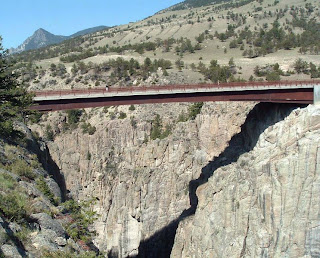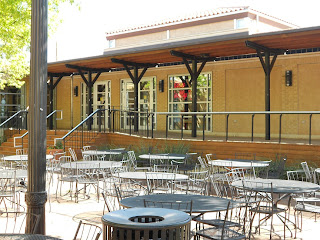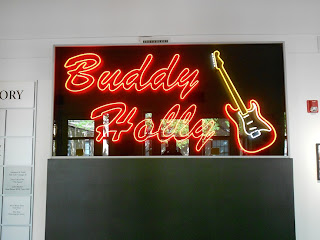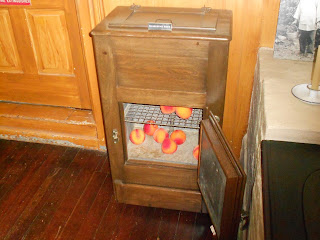 |
| Original Mission Dolores |
The Mission is also referred to as Mission San Francisco de Asis. The mission of course has gone through several changes and repairs over the years, especially resulting from the 1906 San Francisco Earthquake. The structures that are at the corner of today's Dolores and Sixteenth Streets are a fascinating sight who's history goes back to the founding of San Francisco itself. The original Dolores Mission is now considered the oldest intact building in the city.
The Origins of Mission Dolores
The building of Mission Dolores San Francisco came shortly after the Juan Bautista de Anza Expedition of 1776 came to the Bay Area from Mexico with the direct intention of bringing settlers to the area. De Anza's expedition essentially first settled what is now the city of San Francisco. When de Anza arrived, his first two tasks were to find a suitable place for both a mission and for a presidio.
 |
| Mission Dolores, San Francisco |
Father Francisco Palou who was with the expedition held the first mass in a thatched hut. Later, Father Palou moved the mission to a better site a few blocks away to where it stands today.
The Dolores Mission, where it resides today, was formally dedicated in 1791 and hasn't changed much since. The quadrangle of the mission was finally completed in 1798, twenty years after the missions founding. The small lake where the stream led was eventually over the decades covered up. Interestingly enough, the lake that was filled in and covered was eventually used for settlement with homes being built upon the land fill. This small section received considerable damage during the 1906 Earthquake.
The Mission Indians
 |
| Basilica built in 1918 |
Years later, a group of Indian Christian neophytes were sent out to convince the exiles to come back but the small expedition met with trouble and about a half of them were slain.
The duty of the Spanish mission system was to Christianize the Native population and thus turn them into subjects of the king of Spain. Needless to say, this wasn't necessarily an easy task and there were many Natives who fled after once joining the mission. This really was the case with just about all of the twenty-one missions at one time or another. Even so, the Spanish missions did largely succeed in their goals.
Indians Exposed to Disease
Dolores Mission didn't escape the problem of Indians becoming sick with European diseases. When the native population came in contact with the Spaniards, there immune system couldn't handle the introduction of new diseases and as a result many became sick and died. This was a tragedy that would cause the same results, to devastating effects with the plains Indians during America's push westward. Many of the Indians went to the then Mission San Rafael to the north to live in the better weather. Some estimates of Indian deaths from Dolores Mission put the number at 5,000.
Mexican Rule Comes to Alta California
 |
| Entrance, Dolores Basilica |
Much of the mission lands throughout Alta California were divided into smaller Ranchos and then sold to Mexican citizens who were helpful during the war against Spain for independence.
U.S. Rule Comes to California
The U.S. took over Alta California during the Mexican American War of 1846 and the situation changed yet again. In 1863, thirteen years after California statehood, President Abraham Lincoln signed an Act declaring that all of the 21 missions in the California mission chain would become the property of the Catholic Church. That has remained so ever since.
The cemetery adjacent to the original Dolores Mission structure also tells much of the history of Mission Dolores. There are thought to be 5,000 Ohlone and Miwok Indians buried in the cemetery. There are also well known pioneers of the area interred there. Luis Antonio Argüello, a former governor of Alta California who died in 1830 is buried at the Mission Dolores cemetery.
California Changes With The Gold Rush
 |
| Altar, Mission Dolores Basilica |
At one time, two plank roads were built out to the mission and it would be normal for residents and visitors to make leisurely excursions by horse carriage to the Dolores Mission site.
By the latter 1800's, the city's population was growing and the infrastructure was changing. The original low rise adobe buildings adjacent to the original Dolores Mission were taken down so 16th Street could be lengthened. The small chapel became too small to handle the congregations and a new Victorian designed church was constructed to serve as the parish center and was dedicated in 1876.
This date was the one-hundred year anniversary of the original mission's founding on the small creek Arrroyo de las Dolores during the time of the de Anza Expedition.
 |
| Window inside 1918 Dolores Mission |
Dolores Mission became a basilica in 1954 because of it's important historical status.
Two other related articles we have written which you'll find interesting are Mission Carmel in Carmel California and the Story of the Spanish Missions.
The present site of Mission Dolores Parish includes both the old mission and the newer basilica which was completed in 1918.
This historic San Francisco basilica and the old mission building is an excellent addition to a San Francisco vacation planner and is easy to reach from anywhere in the city. The old mission's religious, architectural and historical place in San Francisco's history and the city's very founding make it a very worth while destination for visitors to San Francisco. In San Francisco, all history leads back to the Dolores Mission.
(Article and photos copyright Western Trips)
View Larger Map

































